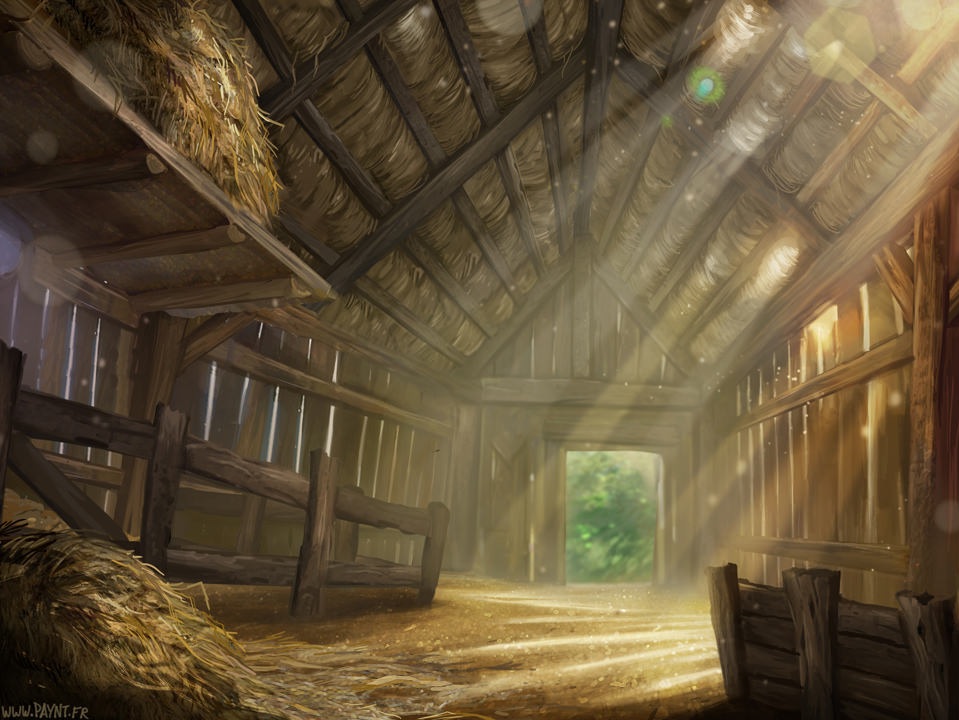Carter Post
Carter posts, also cartage posts, are depots for carts and wagons transporting freight, functioning as temporary storage sites where goods are held before being loaded for transport elsewhere. These posts play a crucial role in the collection, transfer and distribution of goods, particularly raw materials and farm produce, which are gathered from rural areas and hauled to urban centres. There, larger carter posts receive and unload these shipments, preparing them for market sale and distribution.
Most carter posts are owned and operated by guild concerns, established to collect, process and distribute essential goods for manufacturing. Once processed, finished products are then transported to distant customers via these same posts. Additionally, carter posts form a vital connection to seagoing trade, facilitating the continuous transfer of cargo between ships and land-based transport.
Due to the frequent delays and overnight stops associated with long-haul freight transport, carter posts are equipped with essential amenities for teamsters and animal handlers, along with their draft animals. Each post includes a bunkhouse capable of housing at least eight persons, an outdoor paddock, a tether for two oxen and two stalls for sick or injured animals. A galley kitchen provides meals, while a roofed shelter with minimal walls offers protection from the elements for at least two wagons or four carts. A storehouse holds maintenance supplies and emergency provisions, ensuring that both transporters and their cargo can withstand delays, repairs and unforeseen crises.
Carter posts must have access to a cart path or better form of road.
Personnel
A dedicated staff supports the operations of a carter post, ensuring its functionality and upkeep. Beyond the expected roles of cook, stablehand and domestic workers, the post employs a farrier, a stockkeeper and a head overseer, the latter of whom employs a scribe to maintain accounts and records.
The farrier and overseer each have their own dwelling, housing between 1 and 7 individuals (2d4-1), including family members or dependents. The rest of the staff and their families reside in two communal dwellings, with each housing an additional 2 to 5 individuals, typically spouses, siblings or children. Most residents have some ability to defend themselves, given the nature of their work and environment. However, there is typically an additional presence of 0 to 3 guards, ensuring order and protection should disputes arise. In total, a standard carter post supports a population of 9 to 27 individuals, including workers, family members and guards.
Larger carter posts may house significantly more residents, depending on the scale of operations and additional services offered. However, such expansions are best understood not as a single facility but as a collection of interconnected posts, each with distinct yet overlapping responsibilities, forming a hub of logistical importance within the community.
Activity
As wagons and carts arrive, each needing a place to wait and be unloaded, the carter post becomes a hub of movement and energy. Teamsters lead their animals forward, carefully manoeuvring their loads into position, while workers hurry between carts, checking manifests and preparing goods for storage or further transport. The occasional ox is goaded along, a visitor arrives seeking the overseer's attention or a villager stops by looking for a small service, each event adding to the scene's liveliness. Amid the movement, players may find themselves waiting for an opportunity to catch someone's attention, whether to ask for directions, negotiate business or find the right person to assist them.
However, the pace of the post is not always relentless. In quieter moments, when no haulers or merchants are present, the tempo slows considerably. Workers take the chance to rest, converse and relax, knowing that within a few hours, another wave of traffic will arrive, bringing with it the chaos and demands of commerce once more.
Bargaining
Carter posts located in type-7, type-6 or type-5 hexes serve as buyers of raw materials, including ores, stone, farm produce, raw fibres or cloth, tanned leathers and skins, and timber. These goods are purchased directly from suppliers at a rate of 50–80% of their material value, with the total amount paid being limited by the 40 g.p. in available coin on hand at the post.
Characters with bargaining skill can increase the percentage paid by 10%, securing a better deal for their goods. If pressure bargaining is applied, this increase improves to 20%, though the approach may influence future dealings with the post.
In more developed hexes, these transactions are handled by other parties, such as merchant houses or guilds, rather than directly through the carter post. As these posts operate under contractual agreements, their existing stores are already allocated for delivery, preventing them from selling goods to individuals outside their established trade network.
See also,
Hammer (symbol)
Note Payable
The Adventure
